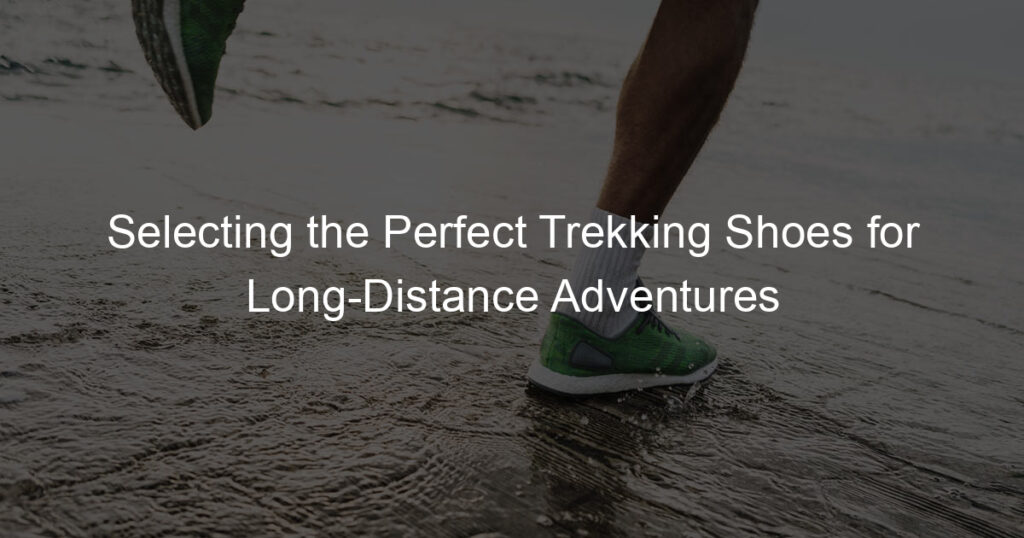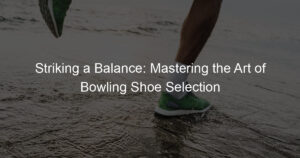
Introduction to Long-Distance Trekking Footwear
When it comes to long-distance trekking, your footwear can make or break your journey. The right pair of shoes not only ensures comfort but also protects your feet from potential injuries. In this section, we will delve into the importance of choosing the right footwear for hiking and the impact it has on long-distance trekking.
- Importance of Choosing the Right Footwear for Hiking
- Impact of Footwear on Long-Distance Trekking
Choosing the right footwear for hiking is not just about comfort, it’s about safety and performance. The right shoes can provide the necessary support to your feet and ankles, reducing the risk of sprains and strains. They also protect your feet from sharp rocks, thorns, and other potential hazards on the trail.
Moreover, the right hiking shoes can improve your balance and stability, especially on uneven terrains. They can also help prevent blisters, which are a common problem among hikers. According to a study, 74% of hikers have experienced foot blisters at some point, which can significantly hamper their trekking experience.
Footwear plays a significant role in long-distance trekking. A good pair of trekking shoes can enhance your performance and endurance, allowing you to cover longer distances with less fatigue. On the other hand, ill-fitting or inappropriate footwear can lead to foot pain, blisters, and even injuries, which can cut your trekking journey short.
Furthermore, the right footwear can also impact your speed and agility on the trail. For instance, lightweight hiking shoes can help you move faster and more efficiently, while sturdy boots can provide better grip and stability on rough terrains. Therefore, choosing the right footwear is crucial for a successful and enjoyable long-distance trekking experience.
In the following sections, we will further explore the basics of trekking shoes, how to choose the perfect hiking boots, and provide a guide on hiking footwear. We will also share some case studies and reviews on comfortable trekking shoes. So, let’s embark on this journey to find the right footwear for your next adventure!
Understanding the Basics of Trekking Shoes
When it comes to outdoor adventures, the right footwear is crucial. Trekking shoes are designed to provide comfort, support, and protection to your feet during long hikes. Let’s explore the different types of trekking footwear.
Types of Trekking Footwear
There are three main types of trekking footwear. Each type is designed for different terrains and hiking conditions. Understanding these types will help you choose the right footwear for your next adventure.
- Hiking Shoes: These are lightweight shoes designed for short hikes on well-defined trails. They provide good comfort and flexibility, but less ankle support compared to other types. Hiking shoes are perfect for day hikes and casual outdoor activities.
- Mid-Cut Boots: Mid-cut boots offer more ankle support and protection than hiking shoes. They are designed for longer hikes on rougher terrains. Mid-cut boots also provide better water resistance, making them suitable for wet conditions and shallow streams.
- Mountaineering Boots: These are the toughest and most durable type of trekking footwear. Mountaineering boots are designed for extreme conditions and high-altitude treks. They provide excellent ankle support, insulation, and grip on slippery surfaces. However, they are heavier and less flexible than other types of trekking shoes.
In conclusion, the type of trekking footwear you choose should depend on the terrain and the length of your hike. Remember, the right shoes can make your trekking experience more enjoyable and less tiring.
Key Features of the Best Trekking Shoes
When it comes to trekking, the right footwear can make all the difference. The best trekking shoes are designed with specific features to ensure your comfort and safety during your adventures. Let’s explore these key features:
- Comfort
- Durability
- Water Resistance
- Traction
Comfort is paramount in trekking shoes. The best shoes have cushioned insoles and breathable materials to keep your feet comfortable during long hikes. They should also fit well, with enough room for your toes to move but not so much that your foot slides around.
Durability is another crucial feature. Trekking shoes should be made of high-quality materials that can withstand rough terrains and harsh weather conditions. They should also have strong, sturdy soles that won’t wear out quickly.
Water resistance is essential for keeping your feet dry in wet conditions. The best trekking shoes have a waterproof lining or a water-resistant outer material to protect your feet from rain, snow, and wet terrain.
Traction is vital for safety on slippery or uneven surfaces. The best trekking shoes have soles with deep lugs and a rubber compound that provides excellent grip on various terrains.
In conclusion, the best trekking shoes are comfortable, durable, water-resistant, and provide excellent traction. These features ensure that you can enjoy your trekking adventures without worrying about foot discomfort or safety issues.
Choosing the Perfect Hiking Boots
When it comes to long-distance trekking, choosing the right pair of hiking boots is crucial. The perfect pair can make your journey enjoyable and comfortable, while a poor choice can lead to discomfort and even injury. Here are some key considerations to keep in mind when selecting your boots.
Considerations for Long-Distance Trekking Boots
There are four main factors to consider when choosing boots for long-distance trekking: fit and comfort, material and construction, weight, and price. Let’s delve into each one.
- Fit and Comfort
- Material and Construction
- Weight
- Price
The most important factor in choosing a hiking boot is how well it fits. A boot that is too tight can cause blisters, while a boot that is too loose can lead to ankle injuries. Comfort is also crucial, especially for long-distance trekking. Look for boots with good arch support and cushioning. Remember, you’ll be wearing these boots for hours at a time, so they need to be comfortable.
The material and construction of a boot can greatly affect its durability and performance. Leather boots are durable and offer good protection, but they can be heavy and take a long time to break in. Synthetic materials, like nylon and polyester, are lighter and break in more quickly, but they may not last as long. The construction of the boot is also important. Look for boots with a waterproof membrane and a sturdy, grippy sole.
The weight of a boot can make a big difference in your trekking experience. Heavy boots can slow you down and tire you out more quickly. On the other hand, lighter boots may not offer as much protection or durability. It’s important to find a balance that works for you.
Finally, consider the price of the boots. While it’s true that you often get what you pay for, expensive doesn’t always mean better. Consider your budget and the features you need, and remember that a good pair of boots is an investment in your comfort and safety on the trail.
In conclusion, choosing the perfect hiking boots involves careful consideration of fit and comfort, material and construction, weight, and price. By taking the time to find the right pair, you can ensure a more enjoyable and comfortable trekking experience.
Trying and Testing Best Footwear for Trekking
Choosing the perfect pair of trekking shoes is not just about the brand or the price. It’s about finding the right fit and testing them in a variety of conditions. Here’s a simple guide to help you through this process:
- Trying on Different Sizes and Brands
- Walking Around in the Store
- Testing on Different Surfaces
Every brand has a unique fit and design. It’s crucial to try on different sizes and brands to find the one that suits your feet the best. Remember, the right fit is not too tight, not too loose, but just right. It’s also important to try the shoes with the socks you plan to wear during your trek. This will give you a more accurate feel of the fit.
Once you’ve found a pair that seems to fit well, don’t rush to the checkout. Spend some time walking around in the store. This will give you a better idea of how the shoes feel when you’re moving. Pay attention to any areas of discomfort or slippage. These issues can become major problems during a long trek.
Finally, if possible, try to test the shoes on a variety of surfaces. Many outdoor stores have areas designed for this purpose. Walk up and down inclines, step on rocks, and test the shoes’ grip on slippery surfaces. This will give you a good idea of how the shoes will perform on the trail.
Remember, the best trekking footwear is the one that fits you perfectly and meets your specific needs. Don’t compromise on comfort and fit for the sake of style or brand. Happy trekking!
Hiking Footwear Guide
One of the most important aspects of hiking is having the right footwear. But, it’s not just about choosing the right pair of trekking shoes. It’s also about maintaining them properly. In this section, we’ll guide you through the steps to keep your hiking boots in top condition.
Maintaining Your Trekking Shoes
Proper maintenance of your trekking shoes can significantly extend their lifespan and keep them comfortable and effective for your hikes. Here are the three key steps to maintain your hiking footwear:
- Cleaning
- Proper Storage
- Regular Inspection
After every hike, it’s essential to clean your shoes to remove dirt and grime. Use a soft brush to remove loose dirt, then wipe them down with a damp cloth. For stubborn stains, use a mild soap solution. Remember to remove the insoles and laces before cleaning, and allow them to air dry naturally.
When not in use, store your trekking shoes in a cool, dry place away from direct sunlight. Sunlight can cause the material to crack and degrade over time. Also, avoid storing them in plastic bags as this can trap moisture and lead to mold growth.
Regularly inspect your shoes for signs of wear and tear. Pay attention to the soles, as they tend to wear out first. Also, check the upper material for cracks or tears. If you notice any significant damage, it might be time to replace your shoes.
Remember, your trekking shoes are your best companion on the trail. Taking good care of them not only ensures they last longer but also keeps your feet comfortable and safe during your hiking adventures.
Replacing Your Trekking Shoes
Just like any other gear, your trekking shoes also have a lifespan. After a certain period of use, they may start showing signs of wear and tear, and that’s when you know it’s time to replace them. Let’s delve into the signs of wear and tear and understand when to buy new trekking shoes.
- Signs of Wear and Tear
- Worn out soles: If the soles of your shoes are worn out, they won’t provide the necessary grip and stability for your trekking adventures. This can be dangerous, especially on slippery or uneven terrains.
- Damage to the upper part: Rips or tears in the fabric of your shoes can allow water and dirt to enter, making your trek uncomfortable.
- Loose or broken laces: If your laces are fraying or have snapped, it might be a sign that your shoes are nearing the end of their life.
- When to Buy New Trekking Shoes
- After a certain mileage: On average, trekking shoes last for about 500 to 800 miles. If you’ve covered this distance in your shoes, it’s time to consider a new pair.
- Discomfort or pain: If you start feeling discomfort or pain in your feet, ankles, or knees during or after a trek, it might be due to worn-out shoes.
- Visible damage: If you can see visible damage to your shoes, such as worn-out soles or tears in the fabric, it’s time to replace them.
Wear and tear on trekking shoes can manifest in various ways. Here are some signs to look out for:
Knowing when to replace your trekking shoes can save you from potential discomfort or injury. Here are some guidelines:
Remember, your safety and comfort during a trek largely depend on your footwear. So, don’t ignore the signs of wear and tear. Replace your trekking shoes when necessary and ensure a safe and enjoyable trekking experience.
Comfortable Trekking Shoes: Case Studies and Reviews
Let’s delve into some real-life experiences of long-distance trekkers and their choice of footwear. These case studies will provide valuable insights into the importance of comfortable trekking shoes.
Case Studies of Long-Distance Trekkers
-
Case Study 1: The Appalachian Trail Adventure
John, an experienced trekker, embarked on the Appalachian Trail, a trek of approximately 2,200 miles. He chose a pair of high-quality trekking shoes from a reputable brand. The shoes had excellent cushioning, ankle support, and were waterproof. Despite the challenging terrain and unpredictable weather, John completed his journey in 6 months without any significant foot injuries. He attributed his success largely to his comfortable footwear.
-
Case Study 2: The Pacific Crest Trail Expedition
Sarah, a novice trekker, took on the Pacific Crest Trail, a daunting 2,650-mile trek. She opted for a budget-friendly pair of trekking shoes. Although the shoes were comfortable initially, they started causing blisters and discomfort after a few weeks. Sarah had to replace her shoes twice during her journey, causing delays and discomfort. Her experience underlines the importance of investing in high-quality trekking shoes for long-distance treks.
These case studies highlight the importance of choosing the right trekking shoes. Comfortable, durable, and supportive footwear can make a significant difference in your trekking experience.
Trekking Footwear Reviews
When it comes to long-distance trekking, your footwear can make or break your adventure. Let’s delve into the world of trekking shoes and explore some of the top brands and best value options available in the market.
- Review of Top Trekking Shoe Brands
- Review of Best Value Trekking Shoes
There are numerous trekking shoe brands out there, but some stand out for their exceptional quality, durability, and comfort. Here are a few:
| Brand | Special Features |
|---|---|
| Merrell | Known for their comfortable fit and excellent traction, perfect for rocky terrains. |
| Salomon | Renowned for their lightweight design and waterproof features, ideal for wet conditions. |
| Columbia | Famed for their durable construction and supportive design, great for long treks. |
Remember, the best brand for you depends on your specific needs and preferences. Always try on different brands to find the perfect fit.
Value doesn’t always mean cheap. It’s about getting the most bang for your buck. Here are some trekking shoes that offer great value:
| Shoe | Value Features |
|---|---|
| Merrell Moab 2 | Affordable, comfortable, and durable. A favorite among beginners and seasoned trekkers alike. |
| Columbia Newton Ridge Plus | Offers excellent durability and comfort at a reasonable price. It’s also waterproof! |
| Salomon X Ultra 3 | Though slightly pricier, its top-notch features like superior traction and lightweight design make it worth every penny. |
When looking for value, consider your trekking needs, the shoe’s features, and your budget. The best value shoe is the one that meets your needs at a price you’re comfortable with.
Conclusion: Your Adventure Begins with the Right Footwear
As we wrap up our comprehensive guide on long-distance trekking footwear, it’s important to remember that the success of your adventure largely depends on the shoes you wear. The right pair of trekking shoes can make all the difference, turning a potentially grueling hike into an enjoyable journey.
- Recap of Choosing the Right Trekking Shoes
- Final Thoughts on Long-Distance Trekking Footwear
Throughout this guide, we’ve covered the basics of trekking shoes, delved into the process of choosing the perfect hiking boots, and provided a detailed footwear guide. We’ve also shared case studies and reviews of comfortable trekking shoes to give you a real-world perspective.
Remember, the right trekking shoes should offer excellent grip, provide ample support, and be durable enough to withstand the rigors of long-distance hiking. They should also be comfortable, fitting well without causing blisters or discomfort.
Don’t forget to consider the terrain and weather conditions you’ll be facing on your trek. These factors will significantly influence your footwear choice. For instance, waterproof shoes are a must for rainy conditions, while breathable shoes are ideal for hot climates.
Long-distance trekking is a rewarding experience that tests your physical and mental endurance. The right footwear is not just a necessity but a trusted companion on this journey. It’s an investment in your comfort, safety, and overall trekking experience.
As we conclude, remember that the best trekking shoe is the one that fits you well and suits your specific needs. So, take your time, do your research, and make an informed decision. Your feet will thank you for it!
In the words of a famous mountaineer, “Mountains are the beginning and the end of all natural scenery. The journey is best measured in friends, rather than miles.” So, lace up your trekking shoes, gather your friends, and embark on the adventure of a lifetime!









